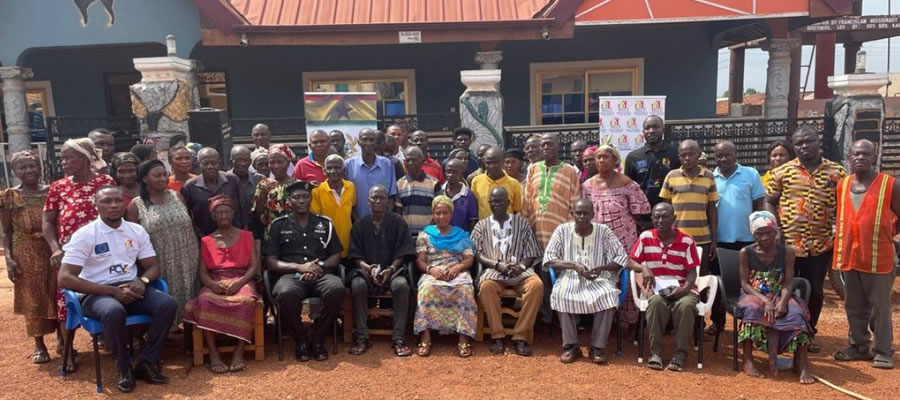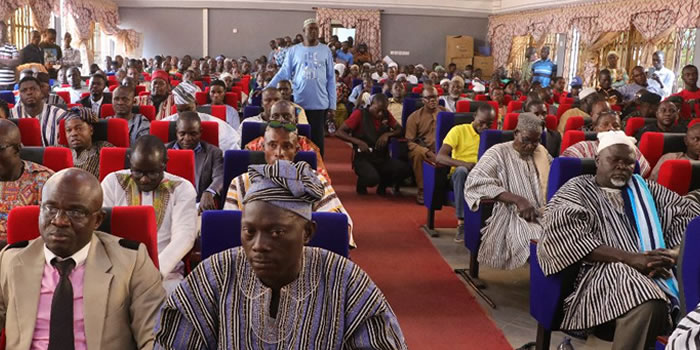

Bathing and Toilet Facilities
Bathing and toilet facilities used by household Table 8.10 shows toilet and bathing facilities used by households in the district. Out of the total number of households in the district, about 87 percent use bush or open field for toilet. This is by far higher than the national average of 19.3 percent and the regional of 72.6 that use the bush or open field as place of convenience. Households that use KVIP and Pit latrine represent 7.4 percent and 3.4 percent respectively.
The other toilet facilities used in the district, including bucket/pan (0.1%), WC (0.2%), public toilet (0.2%) and others (2.1%) are not widely patronized. In terms of bathing facilities in the district, about 42.4 percent of all the households share separate bathroom in the same house. On the other hand, households that own bathrooms for their exclusive use represent 21.1 percent. About 7 and 17 percent of households respectively use private open cubicle and shared cubicles for bathing. About 10 percent of the households use open space around the house for bathing. Interestingly, some of the households (0.7%) rely on river/lake or dam for bathing in the district.
Method of Waste Disposal
Table 8.11 shows that only 7.0 percent of the total numbers of households that have their waste (rubbish) collected. The main disposal method for rubbish in the district is public dump (open space). About 43 percent of the households use this dumping method. This is followed by indiscriminate dumping (37.8%). Other less used methods for waste disposal in the district include burning (9.4%) and burying by household (1.2%).
Liquid waste disposal
Source of lighting Information on lighting as part of housing facility was collected in the 2010 Population and Housing Census. Table 8.7 presents the responses gathered from households about their main source of lighting in the house. Overall, the use of flashlight or torch constitutes the main source of lighting in the district (67.2%). This is followed by kerosene lamp (29.7%) and firewood (0.7%). The use of all other sources of lighting in the district especially electricity from the national grid (1.0) is relatively insignificant. There is, therefore, the need to work towards getting communities connected to the national grid as no single community is connected yet.
Main source of cooking fuel
Table 8.8 presents the type of fuel used for cooking in the district. Overall, wood is the main fuel used in the district, accounting for 97.1 percent of fuel used. This is followed by charcoal (1.3%). This has far reaching implications for the forest and the environment. Households that do not cook at home in the district are few (0.4%). The table further indicates the percent distribution of cooking space in occupied dwellings. Overall, two in five households (41.0%) use open space in compound as their cooking space. This is followed by separate room for exclusive use of household (31.9%) and enclosure without roof (17.6%). The usage of other alternative spaces for cooking is not that common in the district as presented in the table. Households without cooking space in the district account for 1.3 percent.
Date Created : 11/21/2017 6:46:58 AM









 facebook
facebook
 twitter
twitter
 Youtube
Youtube
 +233 593 831 280
+233 593 831 280 0800 430 430
0800 430 430 GPS: GE-231-4383
GPS: GE-231-4383 info@ghanadistricts.com
info@ghanadistricts.com Box GP1044, Accra, Ghana
Box GP1044, Accra, Ghana